한국응용과학기술학회 논문 검색
.jpg)
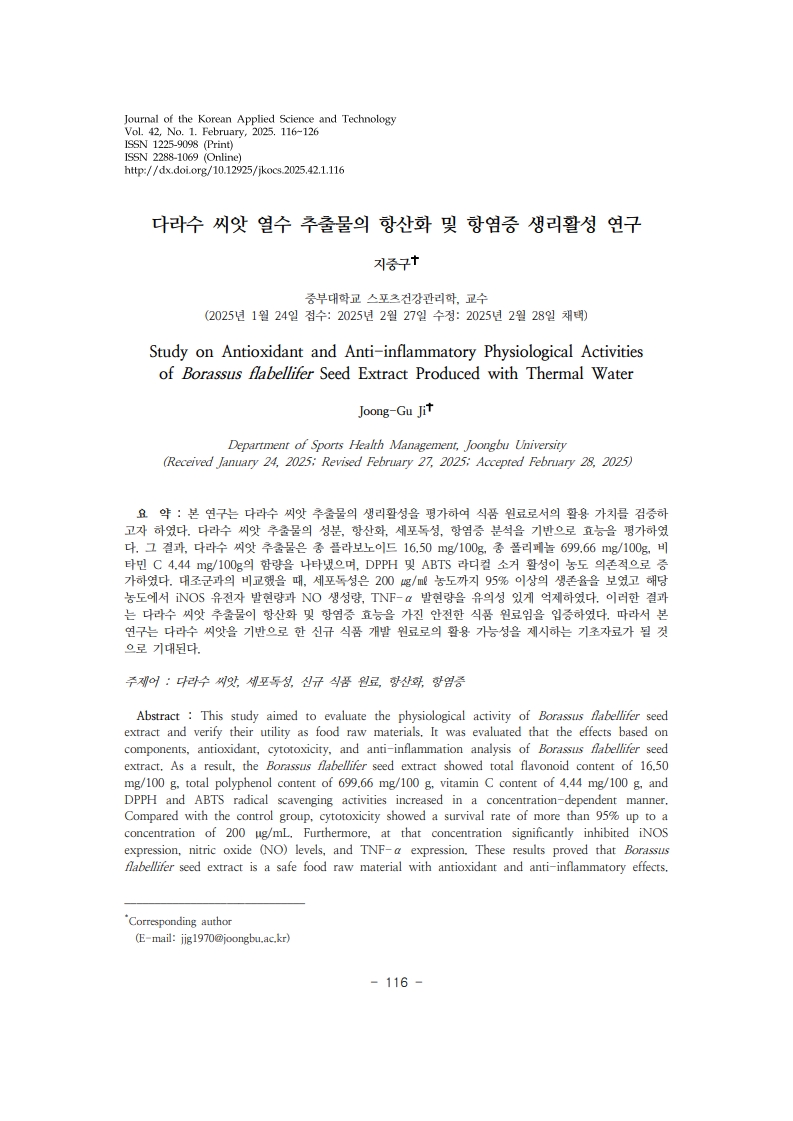
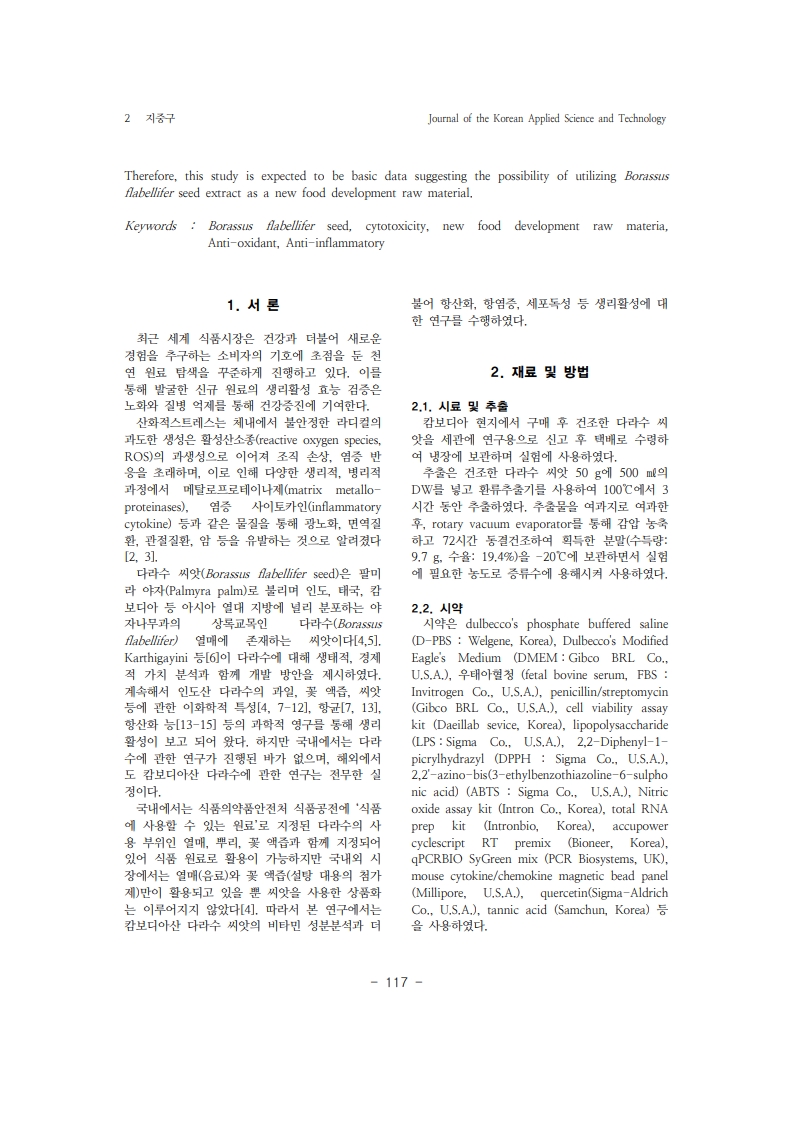
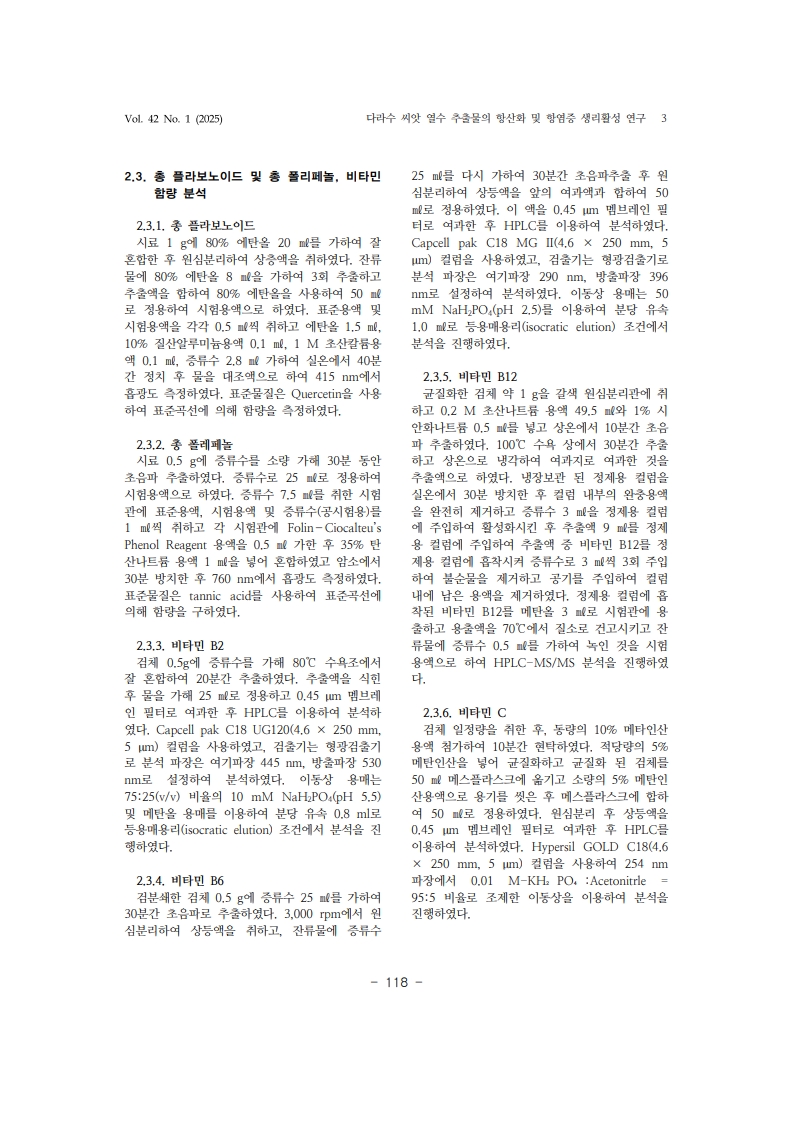
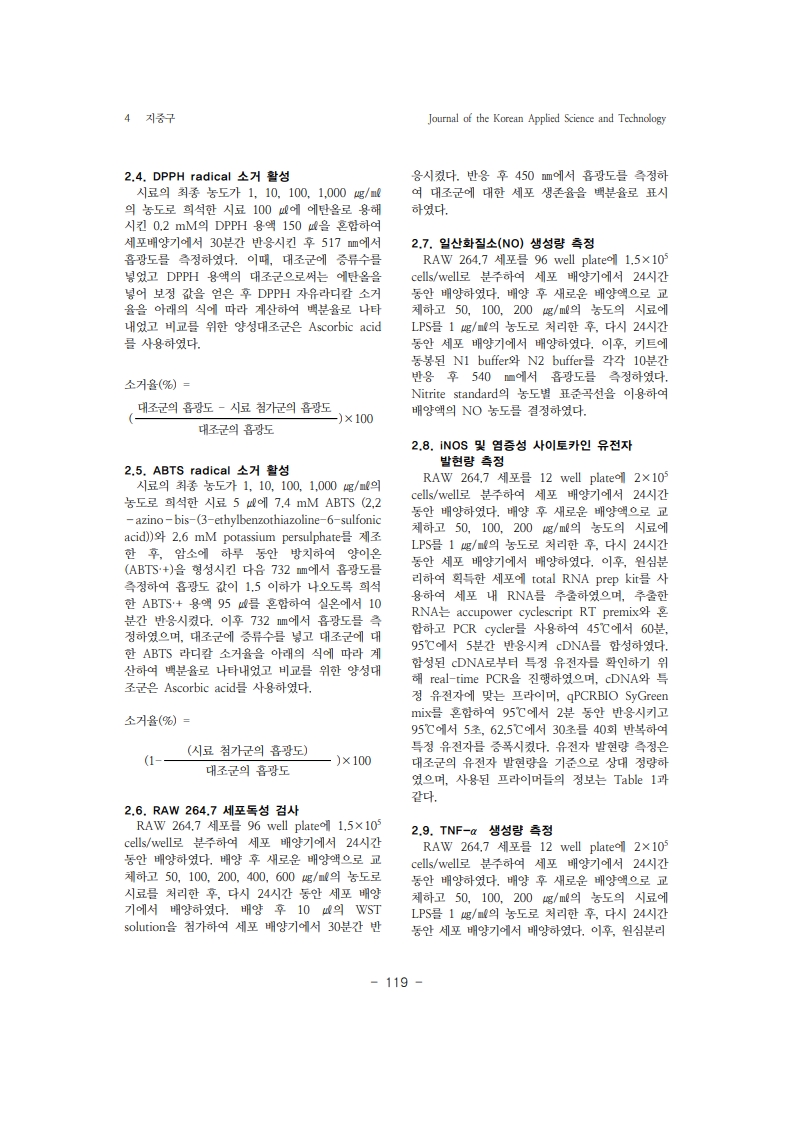

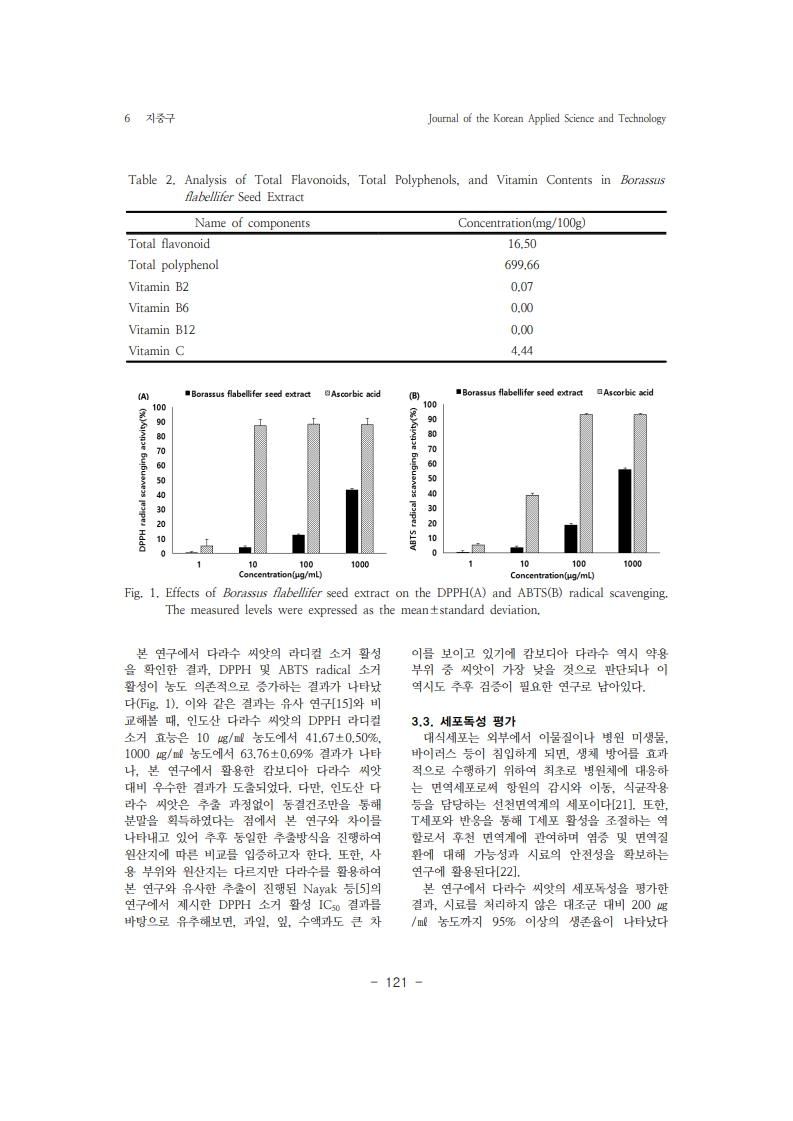
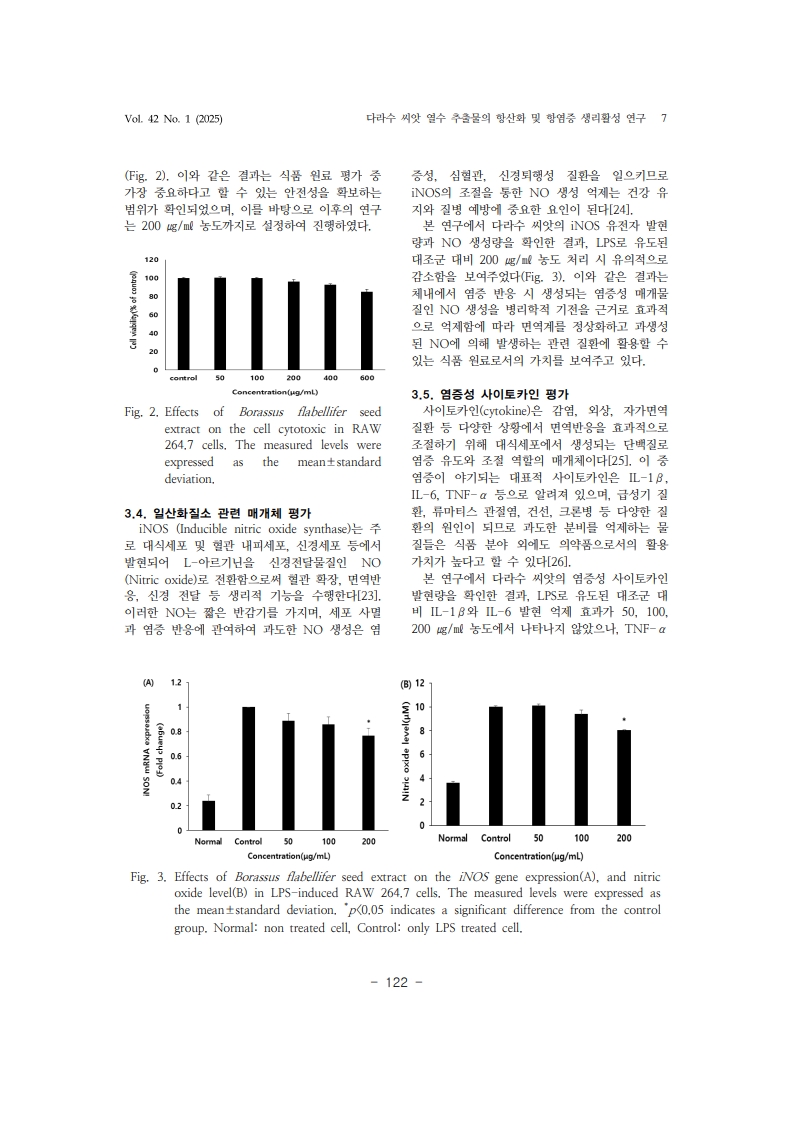
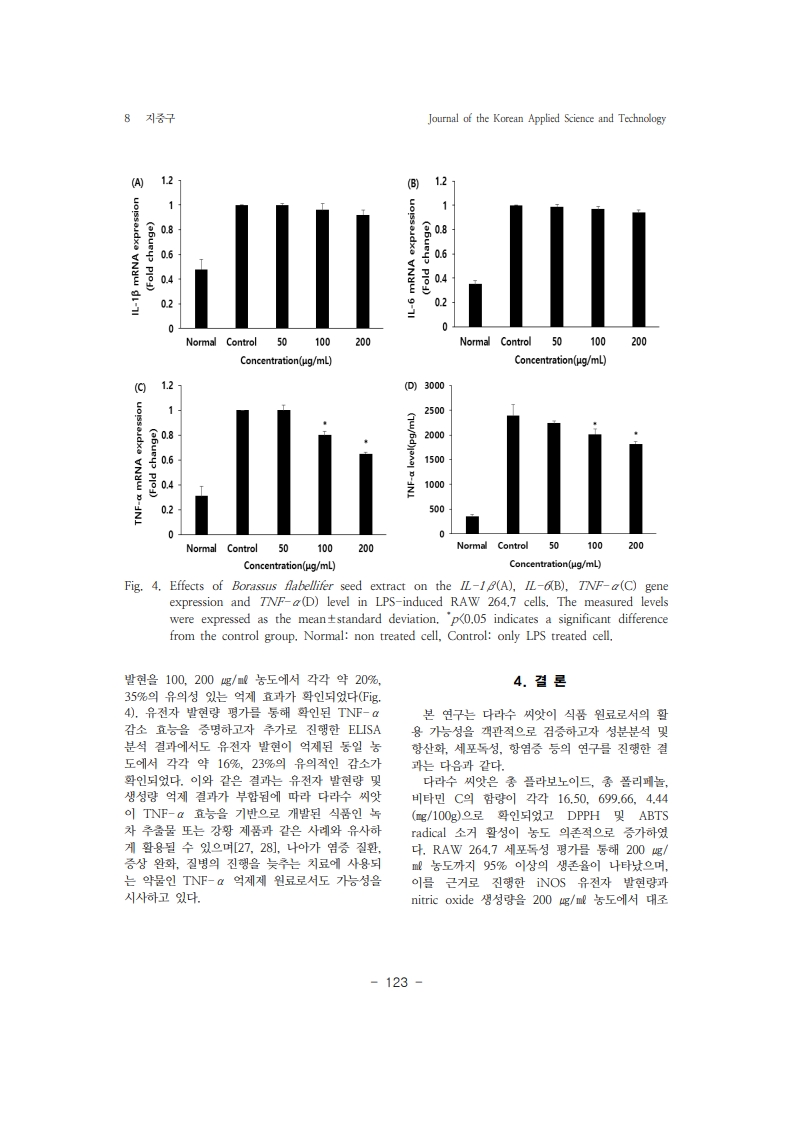
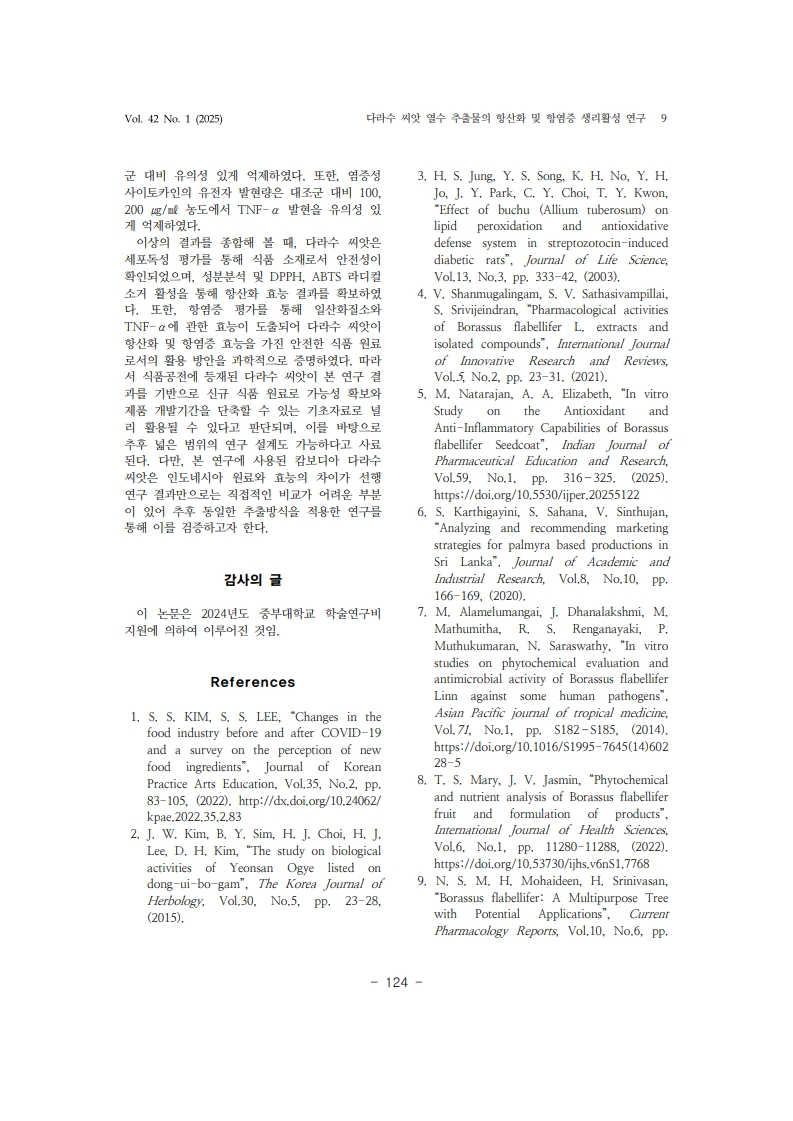


1. S. S. KIM, S. S. LEE, “Changes in the food industry before and after COVID-19and a survey on the perception of new food ingredients”, Journal of Korean
Practice Arts Education, Vol.35, No.2, pp. 83-105, (2022).http://dx.doi.org/10.24062/kpae.2022.35.2.83
2. J. W. Kim, B. Y. Sim, H. J. Choi, H. J. Lee, D. H. Kim, “The study on biologicalactivities of Yeonsan Ogye listed on dong-ui-bo-gam”, The Korea Journal ofHerbology, Vol.30, No.5, pp. 23-28, (2015).
3. H. S. Jung, Y. S. Song, K. H. No, Y. H. Jo, J. Y. Park, C. Y. Choi, T. Y. Kwon,“Effect of buchu (Allium tuberosum) on lipid peroxidation and antioxidative
defense system in streptozotocin-induced diabetic rats”, Journal of Life Science, Vol.13, No.3, pp. 333-42, (2003).
4. V. Shanmugalingam, S. V. Sathasivampillai, S. Srivijeindran, “Pharmacological activities of Borassus flabellifer L. extracts and isolated compounds”, International Journalof Innovative Research and Reviews, Vol.5, No.2, pp. 23-31. (2021).
5. M. Natarajan, A. A. Elizabeth, “In vitro Study on the Antioxidant andAnti-Inflammatory Capabilities of Borassus flabellifer Seedcoat”, Indian Journal of
Pharmaceutical Education and Research, Vol.59, No.1, pp. 316–325. (2025).https://doi.org/10.5530/ijper.20255122
6. S. Karthigayini, S. Sahana, V. Sinthujan, “Analyzing and recommending marketing strategies for palmyra based productions in Sri Lanka”. Journal of Academic and Industrial Research, Vol.8, No.10, pp. 166-169, (2020).
7. M. Alamelumangai, J. Dhanalakshmi, M. Mathumitha, R. S. Renganayaki, P.Muthukumaran, N. Saraswathy, “In vitro studies on phytochemical evaluation and
antimicrobial activity of Borassus flabellifer Linn against some human pathogens”,Asian Pacific journal of tropical medicine, Vol.71, No.1, pp. S182–S185, (2014).
https://doi.org/10.1016/S1995-7645(14)60228-5
8. T. S. Mary, J. V. Jasmin, “Phytochemical and nutrient analysis of Borassus flabellifer fruit and formulation of products”, International Journal of Health Sciences, Vol.6, No.1, pp. 11280-11288, (2022).https://doi.org/10.53730/ijhs.v6nS1.7768
9. N. S. M. H. Mohaideen, H. Srinivasan, “Borassus flabellifer: A Multipurpose Treewith Potential Applications”, Current Pharmacology Reports, Vol.10, No.6, pp.
414-421, (2024). https://doi.org/10.1007/s40495-024-00365-z
10. T. R. Krishnaveni, R. Arunachalam, M. Chandrakumar, G. Parthasarathi, R. Nisha, “Potential review on palmyra (Borassus Flabellifer L.)”, Advances in Research, Vol.21, No.9, pp. 29-40, (2020).https://doi.org/10.9734/air/2020/v21i930229
11. R. M. N. A. Wijewardana, S. B. Nawarathne, I. Wickramasinghe, C. R.Gunawardane, W. M. C. B. Wasala, B. M. K. S. Thilakarathne, “Retention of
physicochemical and antioxidant properties of dehydrated bael (Aegle marmelos) and palmyra (Borassus flabellifer) fruitpowders”, Procedia food science, Vol.6, No.1, pp. 170-175, (2016).https://doi.org/10.1016/j.profoo.2016.02.041.
12. A. Ali, D. Alhadji, C. Tchiegang, C. Saïdou, “Physico-chemical properties ofpalmyra palm (Borassus aethiopum Mart.) fruits from Northern Cameroon”.AfricanJournal of Food Science, Vol.4, No.3 pp. 115-119, (2010).https://doi.org/10.5897/AJFS.9000231
13. P. Tunit, P. Thammarat, S. Okonogi, C. Chittasupho, “Hydrogel containingBorassus flabellifer L. male flower extract for antioxidant, antimicrobial, and antiinflammatoryactivity”, Gels, Vol.8, No.2, p. 126, (2022).https://doi.org/10.3390/gels8020126
14. J. Sudiono, G. R. Susanto, “Antioxidant content of palm fruit (Borassus flabellifer L.) seed coat”, Biomedical Journal of Scientific & Technical Research, Vol.34, No.3, pp. 26695-26699, (2021).https://doi.org/10.26717/BJSTR.2021.34.005540
15. S. M. Banu, N. Vigasini, S. Surenderan, “Phytochemical Screening, in vitroAntioxidant and Anti-inflammatory activity of Freeze-dried Borassus flabellifer
L. Seed Powder”, Asian Journal of Biological and Life Sciences, Vol.10, No.1,pp. 202-209, (2021). https://doi.org/110.5530/ajbls.2021.10.29
16. J. E. LEE, S. Y. Park, “Effects of Flavonoids on Skin according to TheirStructural Characteristics: A Review”. Asian J Beauty Cosmetol, Vol.20, No.1,
pp. 133-143, (2022). https://doi.org/10.20402/ajbc.2022.0006
17. H. S. Youn, “New Nutritional Concepts of Vitamins and Minerals”, Korean journal of pediatrics, Vol.48, No.12, pp. 1295-1309, (2005).
18. Y. R. Kim, A. J. Kim, “Evaluation of the Biological Activities of Berries as an Inner Beauty Ingredient”, Asian J Beauty Cosmetol, Vol.18, No.3, pp. 375-387,
(2020). https://doi.org/10.20402/ajbc.2020.0051
19. D. Liu, X. Q. He, D. T. Wu, H. B. Li, Y. B. Feng, L. Zou, R. Y. Gan,“Elderberry (Sambucus nigra L.): Bioactive compounds, health functions, and
applications”, Journal of agricultural and food chemistry, Vol.70, No.14, pp. 4202-4220, (2022). https://doi.org/10.1021/acs.jafc.2c00010
20. Y. J. Kim, “Biological Defense Against Free Radicals and the Failure of Defense – Aging and Degenerative Diseases”, Bulletin of Food Technology, Vol.10,
No.2, pp. 4-26, (1997).
21. R. Alam, “A brief review of the immune system”.Primary Care: Clinics in OfficePractice, Vol.25, No.4, pp. 727-738, (1998).
https://doi.org/10.1016/S0095-4543(05)70084-1
22. Y. J. Joung, Y. M. Kim, Y. A. Jang, “Studies on the antioxidant and whiteningeffects of chamaecyparis obtusa extract”, Journal of the Korean Applied Science and Technology, Vol.37, No.6, pp. 1496-1506, (2020).https://doi.org/10.12925/JKOCS.2020.37.6.1496
23. S. H. Byun, C. H. Yang, S. C. Kim, “Inhibitory effect of ScrophulariaeRadixextract on TNF-α, IL-1β, IL-6and nitricoxide production in lipopolysacchari- Vol. 42 No. 1 (2025) 다deactivated Raw 264.7 cells”, The KoreaJournal of Herbology, Vol.20, No.2, pp. 7-16, (2005).
24. Y. J. Kang, A. R. Han, H. Y. Min, J. Y. Hong, E. K. Seo, S. K. Lee, “InhibitoryEffects of Morachalcone A on Lipopolysaccharide - Induced Nitric Oxide Production in Raw 264.7 Cells”, Journal of Cancer Prevention, Vol.14, No.2, pp. 118-123, (2009).
25. J. H. Lee, H. J. Jeong, J. S. Park, “Effect of Celeriac Extract on the LPS-Induced Production of Pro-inflammatory Cytokinesby RAW 264.7 cells”, Journal of the Korea Convergence Society, Vol.12, No.2,pp. 295-300, (2021). https://doi.org/10.15207/JKCS.2021.12.2.295
26. E. O. Iwalewa, L. J. McGaw, V. Naidoo, J. N. Eloff, “Inflammation: the foundation of diseases and disorders. A review of phytomedicines of South African origin used to treat pain and inflammatory conditions”, African journal ofbiotechnology, Vol.6, No.25, (2007). https://doi.org/10.5897/AJB2007.000-2457
27. K. H. Lim, S. E. Jeon, M. N. Choi, “Review of Effectiveness of Green TeaEpigallocatechin Gallate(EGCG) on the Inside and Outside of Human Body”,
Korean Journal of Aesthetics and Cosmetology, Vol.13, No.6, pp. 701-711, (2015). https://api.semanticscholar.org/CorpusID:102641215
28. Y. Peng, M. Ao, B. Dong, Y. Jiang, L. Yu, Z. Chen, C. Hu, R. Xu, “AntiInflammatoryEffects of Curcumin in the Inflammatory Diseases: Status, Limitations and Countermeasures.” Drug design, development and therapy, Vol.2, No. 15, pp. 4503–4525, (2021). https://doi.org/10.2147/DDDT.S327378

